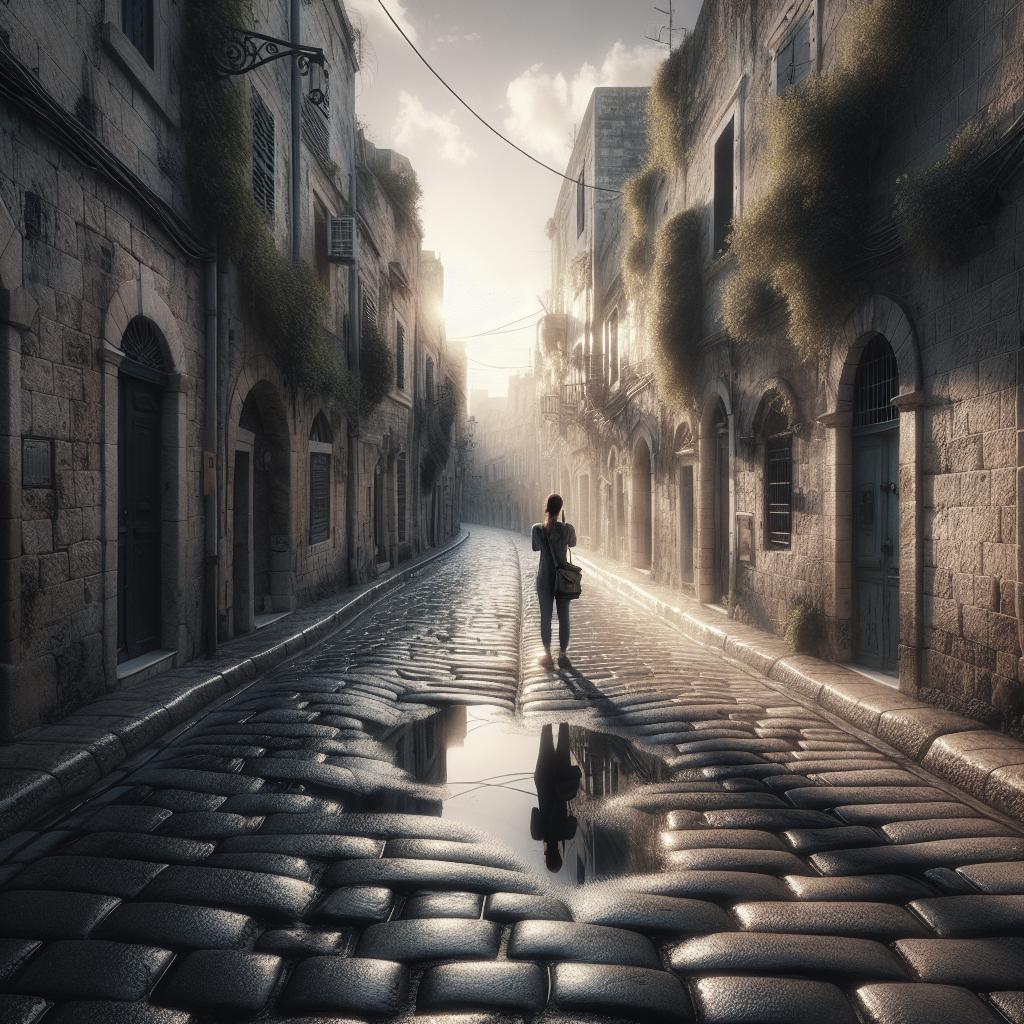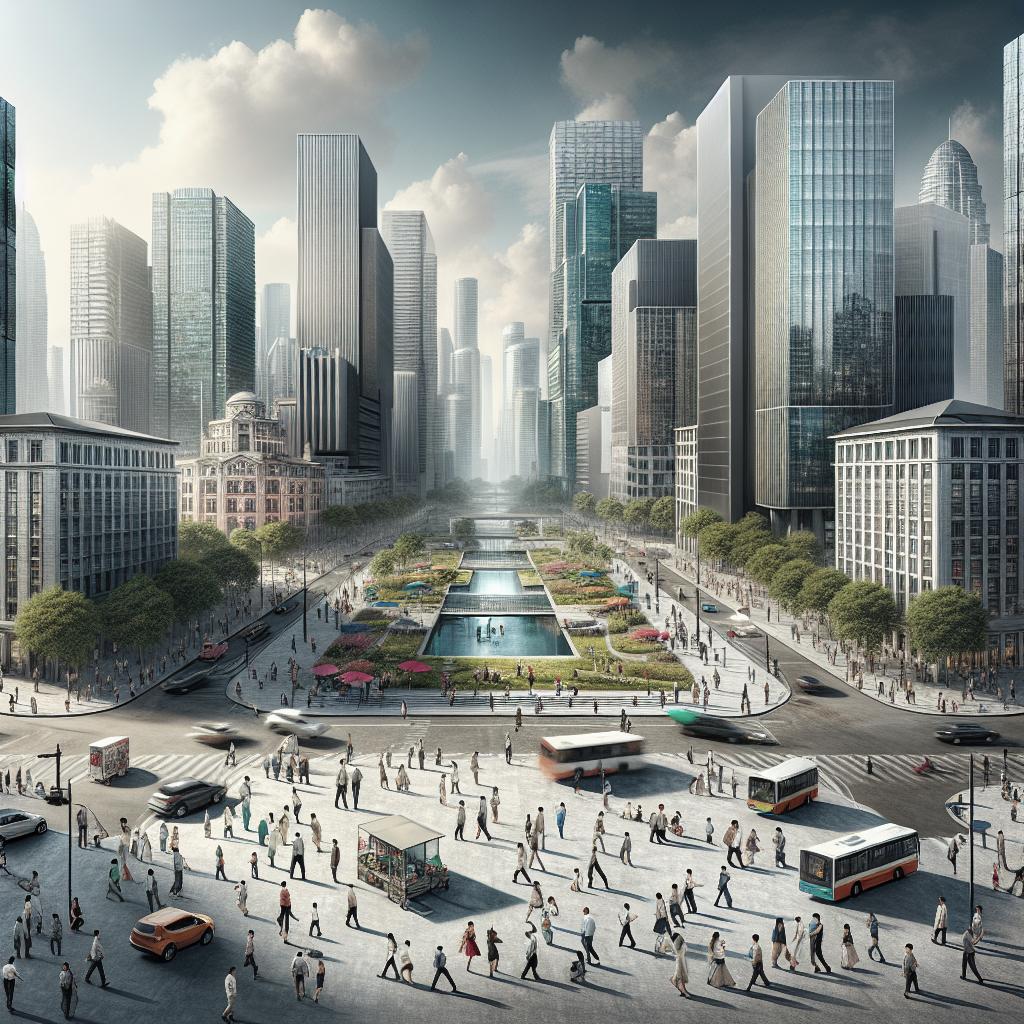<>
“`
Street photography, often lauded for its candid and raw depiction of life, requires more than just a good camera. Timing, techniques, and the right mindset play pivotal roles in capturing compelling images. This comprehensive guide delves into various strategies that can elevate your street photography, from practicing non-judgmental wandering to harnessing the golden hour’s soft light. We also discuss tips like avoiding zoom lenses and focusing on interesting hand gestures, all of which aim to refine your approach and enhance the quality of your photographs. Whether you’re a beginner or a seasoned photographer, these insights can help you see the streets in a new light.
1. Wander
The essence of street photography lies in its unpredictable nature. To harness this unpredictability, it’s crucial to wander. Wandering allows you to find interesting scenes organically, as opposed to running after pre-conceived notions or planned shots. The spontaneity of wandering often yields the most authentic and engaging street photographs.
When you wander without specific targets, you become more open to the serendipitous moments that define street photography. You might stumble upon a lively market scene, or an intriguing graffiti-filled alleyway. By allowing yourself to get lost in the rhythm of the street, you’ll find opportunities that you couldn’t have planned for.
Assignment: Don’t judge
One of the biggest barriers to effective wandering is our innate tendency to judge. Try to approach every scene with an open mind. Avoid preconceived notions about what makes a subject or scene “worthy” of your lens. Sometimes, the most mundane elements can turn out to be incredibly compelling when captured creatively.
As an exercise, choose a busy street and spend at least an hour simply observing. Don’t lift your camera until you’ve captured at least ten moments mentally. This “don’t judge” assignment trains your eye to look beyond the obvious and find beauty or intrigue in unexpected places.
2. Juxtapose
Juxtaposition in street photography can create powerful narratives by placing contrasting elements side by side. Contrasts draw immediate attention and engage viewers, prompting them to think deeper about the story behind the image. You might capture a smartly dressed businessman walking past a homeless person, or an old, dilapidated building next to a shiny new skyscraper.
By actively seeking out these contrasting elements, you can highlight social issues or the passage of time, making your photos not only visually captivating but also thought-provoking. Juxtaposition helps in telling compelling stories through a single frame, making your work resonate on a deeper level.
Assignment: The fishing technique
A widely-known technique in street photography, the fishing technique, involves finding a promising location and waiting for the perfect moment to unfold. Once you’ve identified an interesting backdrop or a potential scene for juxtaposition, remain patient. Wait for contrasting elements—whether people or objects—to come into the frame.
This technique requires patience but can produce striking results. Choose a location like a busy intersection or a park bench. Spend time observing the layers of life that unfold there. Settle on a spot and wait until a juxtaposing element naturally comes into view. Capture those moments patiently for more enriched storytelling.
3. Make more than 1 photo
Limiting yourself to one shot can diminish the potential of capturing the best moment. Always aim to take multiple shots from different angles and perspectives. This not only increases your chances of getting a great photo but also helps in understanding what works best in different scenarios.
Shoot continuously to catch fleeting expressions and actions. By making more than one photo, you also have the leverage to experiment with composition, lighting, and subjects, ultimately refining your skills and eye for detail.
Assignment: At least 10 photos of everything
Set yourself a task: for every scene or subject that catches your eye, take at least ten photos. This exercise trains you to explore all possible angles, lighting conditions, and compositions, enriching your toolkit as a street photographer.
Try different perspectives: shoot from above, get down low, or experiment with diagonal framings. The objective is to stretch your creative boundaries and to immerse yourself entirely in the scene, leading to unexpectedly brilliant shots.
4. Look for interesting hand-gestures
Hand gestures can be highly expressive, often revealing a person’s emotions and adding a dynamic quality to your photos. Whether it’s a street vendor gesticulating while making a sale or a pedestrian animatedly chatting on the phone, capturing these gestures can bring your photos to life.
People’s hands often tell stories that their faces might not. By focusing on hand gestures, you can highlight actions and emotions that make your images more compelling and narrative-driven.
Assignment: Only photograph people with interesting hand-gestures
For a dedicated practice session, limit yourself to photographing people with intriguing hand gestures. Head to a place like a market or a public square where people are likely to be engaged in activities. Observe and capture moments where hand movements are prominent and telling.
This focus not only hones your observational skills but also challenges you to find creativity in everyday actions. You’ll realize how much a simple hand gesture can add to the depth and interest of your photos.
5. Don’t use a zoom/telephoto lens
Telephoto lenses can make you lazy by allowing you to shoot from a distance. Street photography demands intimacy and immediacy, both of which are best achieved with a prime lens or a moderate wide-angle lens. Getting closer to your subjects usually results in more engaging and impactful images.
A fixed focal length forces you to move around, explore different angles, and become part of the scene. This physical movement often leads to more genuine interactions and richer compositions.
Assignment: Don’t zoom
Next time you head out for a street photography session, leave your zoom lenses at home. Equip yourself with a prime lens, like a 35mm or 50mm. This forces you to approach your subjects and interact with your environment more naturally.
By physically moving closer to your subjects, you might capture emotions and details that would otherwise be missed. This approach fosters a deeper connection with your surroundings, resulting in more authentic and impactful images.
6. Shoot during golden hour (sunrise/sunset)
The golden hour, just after sunrise or just before sunset, provides soft, warm, and directional light ideal for street photography. The shadows are longer, and the light adds a beautiful glow to your subjects. This time of day can transform ordinary scenes into visually captivating ones.
Golden hour light is particularly flattering for portraits and can enhance the textures and details in architecture and street scenes. The warm tones add a sense of nostalgia and moodiness to your photos, making them more appealing and evocative.
Assignment: Shoot during golden hour
Plan a photography outing specifically for the golden hour. Choose a location known for interesting light and shadow play, such as a city park, a busy street, or an iconic building. Use the warm, directional light to highlight contrasts and details.
Experiment with backlighting, silhouettes, and shadows. The golden hour’s soft light can create magical effects, turning mundane scenes into extraordinary captures. This practice will help you understand light better and use it creatively in your shots.
7. Subtract from the frame
One of the common pitfalls in street photography is overcrowding the frame with too many elements, which can divert focus from the main subject. Simplifying your composition by subtracting unnecessary distractions can lead to more powerful and cleaner images.
Think of your frame like a canvas. Each element should add to the story or contribute to the visual appeal. By consciously removing clutter, you make your main subject stand out, creating a stronger visual impact.
Assignment: Cut, cut, cut
As a practice, take a minimalist approach. Look through your viewfinder and consciously eliminate distractions. If you notice something in the frame that doesn’t enhance the image, find a way to exclude it—whether by changing your angle, moving closer, or waiting for it to move out of the frame.
Focus on capturing clean, compelling compositions with clear subjects. You’ll be surprised at how much more powerful your photos can become when they’re free of unnecessary elements.
Final thoughts
Street photography is about capturing genuine moments and telling stories through your lens. By wandering without judgment, seeking juxtapositions, shooting multiple angles, focusing on gestures, avoiding zoom lenses, using golden hour light, and simplifying your compositions, you can elevate the quality and impact of your photos. Each technique brings a unique perspective and learning curve, challenging you to be more creative and observant in your photographic journey.
| Tip | Description |
|---|---|
| Wander | Explore scenes spontaneously to capture authentic moments. |
| Juxtapose | Place contrasting elements side by side for compelling narratives. |
| Make more than 1 photo | Take multiple shots from various angles to capture the best moment. |
| Look for interesting hand-gestures | Focus on expressive hand movements to add dynamism to your photos. |
| Don’t use a zoom/telephoto lens | Avoid zoom lenses to encourage intimate, engaging shots. |
| Shoot during golden hour (sunrise/sunset) | Use the soft, warm light of the golden hour for visually appealing photos. |
| Subtract from the frame | Remove unnecessary elements to simplify and strengthen compositions. |
“` This blog post guides photographers through various strategies to improve their street photography, stressing the importance of the right timing, approaches, and creative techniques to bring out the best in every shot.


